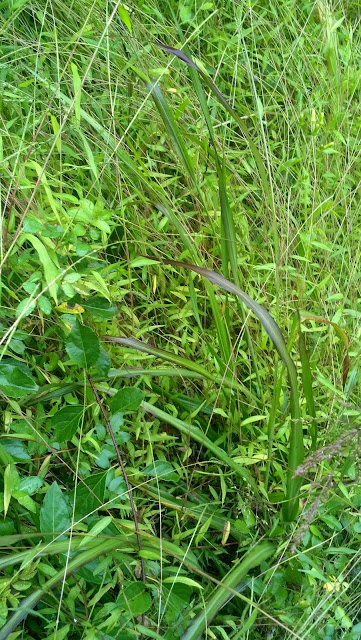On September 13, 2014, the Wildflower Certification class took a trip to Coverdale Farm to learn about grasses and late-season plants. The weather was rainy.
We started out in a shelter near one of the farm fields. We looked at some ruderal species--ones that colonize disturbed habitats. These include
Crabgrass (digitaria)--an annual , non-native, invasive grass.
Goose grass (Eleusine indica)--this grass thrives in areas with heavy foot traffic. It can be seen on paths growing in a flattened clump.
---
Walking towards the meadow, we saw grasses of less disturbed habitats:
Slender muhly (muhlenbergia tenuiflora)
Broom sedge (Andropogon virginicus) despite its name, is a grass.
Beaked panic grass (Panicum anceps)
 |
| Weather: rainy
Foxtail grass processes c4 more efficiently than some other grasses, but alsoneeds warmer temperatures.
Purpletop, or grease grass, has a panicle and a white ligule,
Besides the grasses, we saw the following plants and flowers:
|
Turtlehead flowers are good for attracting the Baltimore Checkerspot butterfly.
Wild basil has a stem that goes right through the flower.
Aster
Goldenrod
Others that I got no pictures of:
panicked aster
lambs quarters
purple stemmed aster
arrow leaf tear a thumb













No comments:
Post a Comment